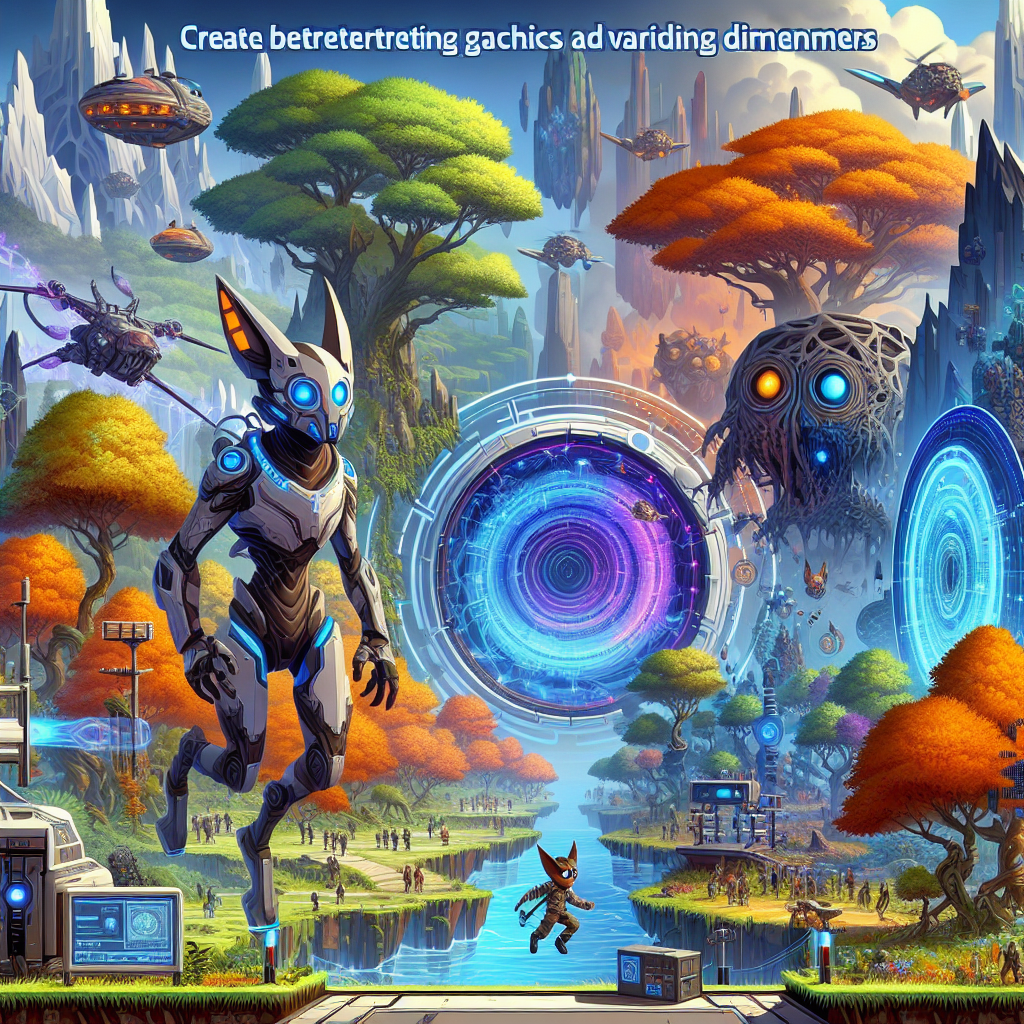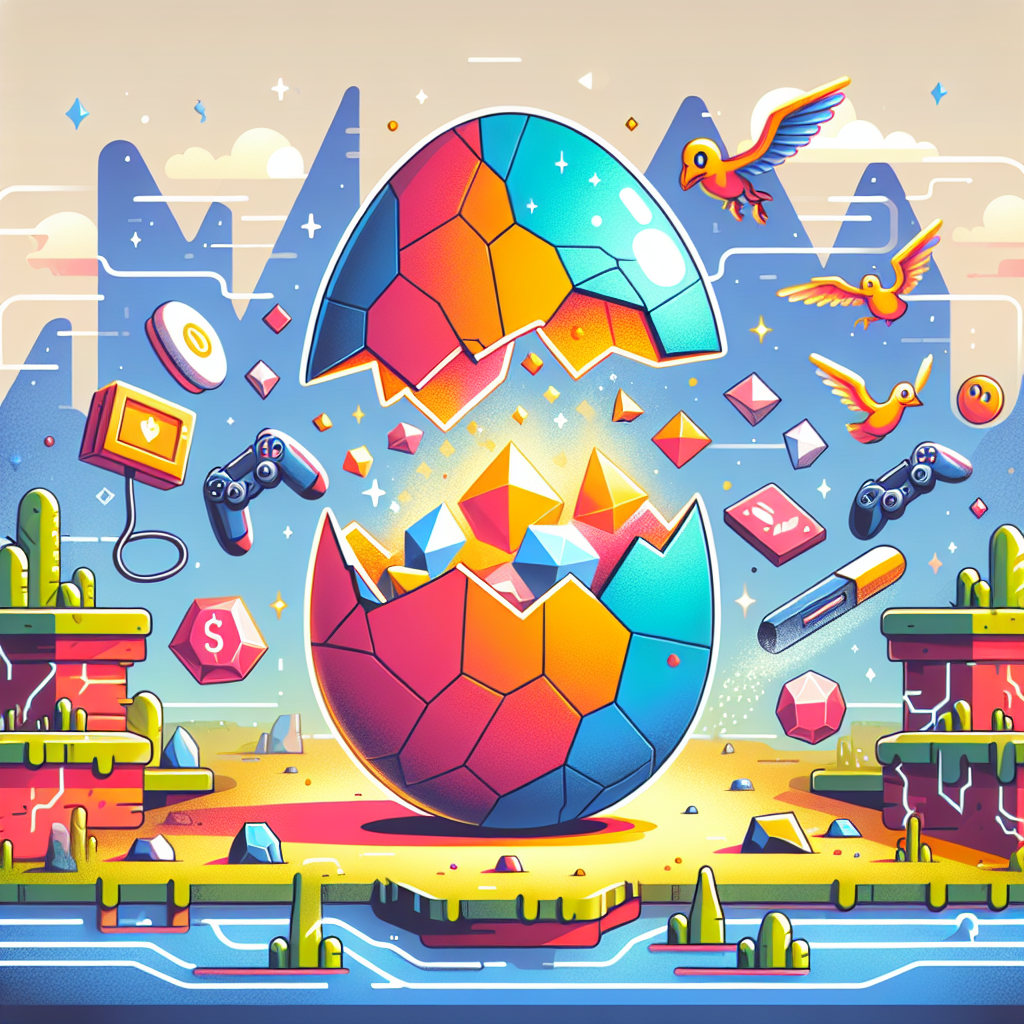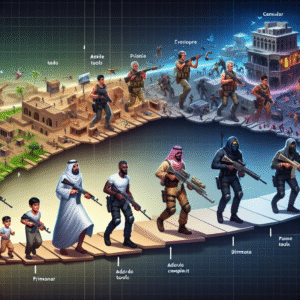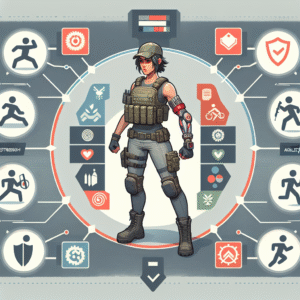Level Design in Rift Apart: A Developer’s Insight
Level Design in Rift Apart: A Developer’s Insight
In the vibrant universe of Ratchet & Clank: Rift Apart, level design plays a crucial role in creating an immersive gaming experience. This latest installment in the franchise leveraged the capabilities of the PlayStation 5, delivering groundbreaking gameplay intertwined with seamlessly integrated story elements. Examining the intricate level design elements offers a glimpse into the innovative thought processes and technical skills of the developers at Insomniac Games.
The level design in Rift Apart stands as a testament to advanced technological integration in modern video games. Central to this is the game’s ability to execute rapid dimensional travel—a feature built on the PS5’s high-speed SSD. This allows players to move between detailed environments almost instantaneously, enhancing the game’s pace and fluidity. The core design philosophy revolved around maintaining these fast transitions while ensuring each dimension retained its unique identity and atmosphere.
One of the hallmark levels in Rift Apart is Nefarious City. This sprawling urban landscape serves as a hub world teeming with vibrant neon lights and bustling crowds. The city’s layout was crafted to encourage exploration, filled with alleys, rooftop pathways, and hidden nooks. Developers used strategically placed markers and subtle environmental cues to guide players without explicit directions. Such elements include distinctive landmarks, lighting variations, and enticing background activities that draw the player’s eye toward key areas, fostering a sense of discovery.
Environmental storytelling is another pillar of Rift Apart’s level design. Each area is meticulously crafted to communicate narrative elements without reliance on dialogue or cutscenes. Whether traversing the mechanical wastes of Blizar Prime or the lush alien flora of Sargasso, each environment tells a story intrinsic to the wider narrative arc. Interactive elements, like listening devices and visual signposts, are employed to enrich the background lore and present opportunities for deeper immersion.
In terms of mechanics, level design in Rift Apart takes full advantage of its diverse arsenal and gadgetry, most notably the Rift Tether and dimensional rifts. These rifts act as gateways, seamlessly transporting players through the environment and opening new routes. Their placement within levels is thoughtfully considered to augment both the complexity of puzzles and the pace of combat encounters. This dual functionality exemplifies how level design and gameplay mechanics are intertwined to offer dynamic player experiences.
Verticality is another concept widely utilized across Rift Apart’s level design. The game’s multi-tiered environments empower players to engage with spaces both horizontally and vertically. Such design is most apparent in Skarro Canyon, where players climb through muggy swamps and towering rock formations. By incorporating multiple layers of interaction, designers created a highly dynamic environment that encourages innovative approaches to navigation and combat scenarios.
Lighting and visual effects are expertly used to enhance the aesthetic quality and functional design of each level. In levels such as Scarstu Debris Field, the interplay of light and shadow not only elevates the visual appeal but also directs the player’s path and highlights interactions. The contrast between the bright, harsh light of space and the dimly lit interiors creates tension and intrigue, showcasing the developer’s ability to guide players subtly through artistic techniques.
Adaptive challenges in Rift Apart’s levels are critical in maintaining player engagement. Developers incorporated scalable difficulty within environmental puzzles and combat scenarios. These challenges are adaptable based on player progress and skill level, ensuring a balanced experience that remains challenging yet enjoyable. The use of feedback loops—systems that provide players with clear indicators of their actions—ensures that players are continuously informed and adjusted within the game space.
Another innovative aspect of level design is the accessibility features integrated within the game. Insomniac Games emphasized inclusivity, offering a range of options to assist players of varying abilities. Features like high-contrast modes, customizable controls, and hint systems enhance the gaming experience for a broader audience. Levels are designed with these features in mind, ensuring they complement the game’s aesthetics and mechanics without compromising the overall experience.
The soundscape of Rift Apart is meticulously designed to complement its visual and narrative themes. Audio cues play an essential role in the player’s navigation and understanding of level dynamics. From the intricate mechanical whirring in Zurkie’s bar to the distant chirps of alien wildlife in Torren IV, each sound is carefully crafted to enhance immersion. Dynamic audio changes based on environmental interactions and player movements, providing subtle hints and breathing life into the game’s world.
Character animation and AI behavior contribute significantly to the realism and immersion of the levels. NPCs in cities like Nefarious City and vendors in markets behave according to programmed routines that reflect the socio-economic narrative of each environment. These behaviors add depth and credibility to the world, allowing players to engage more fully with their surroundings.
Through procedural generation techniques and handcrafted elements, Insomniac Games achieved a balance that allows for both the detail and replayability of levels. While key segments of the world are meticulously designed, procedural elements introduce variability, ensuring no two player experiences are entirely alike. This hybrid approach maximizes the game’s ability to surprise and engage players consistently.
Thus, the level design in Rift Apart exemplifies a masterclass in modern video game development. By combining cutting-edge technology with creative artistry and thoughtful player-centric design, Insomniac Games created a diverse array of environments that captivate and challenge players at every turn. Through the seamless integration of narrative, mechanics, and visuals, Rift Apart stands as a definitive experience within the Ratchet & Clank series, pushing the boundaries of what is possible in gaming environments.












Post Comment